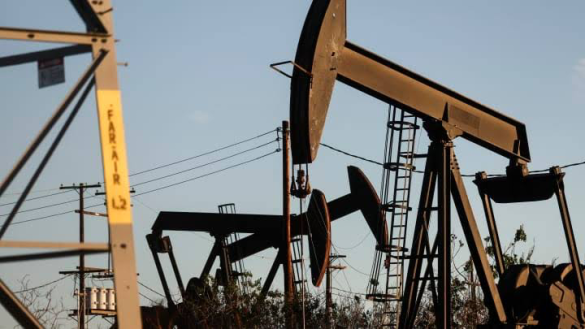The ongoing war in Gaza and the prospect of a US interest rate cut have pushed oil prices higher, with Brent crude trading above $83 per barrel on Thursday.
The global benchmark has been hovering around the $80 mark for three weeks, despite the escalating violence between Israel and Hamas that has killed more than 24,000 people and displaced hundreds of thousands more.
Analysts say the conflict has not significantly disrupted oil supplies from the region, but it has added to the geopolitical risk premium that supports oil prices.
“The market is pricing in some kind of disruption risk, but it’s not a major factor at the moment,” said Giovanni Staunovo, an oil analyst at UBS. “The main drivers are still the demand recovery and the OPEC+ policy.”
Demand recovery and OPEC+ policy
The oil demand has been recovering from the pandemic-induced slump, thanks to the global vaccination rollout and the easing of lockdown measures in many countries.
The International Energy Agency (IEA) expects oil demand to grow by 5.4 million barrels per day (bpd) in 2024, reaching pre-crisis levels by the end of the year. However, the supply side remains constrained by the OPEC+ alliance, which has been gradually easing its production cuts since May, but still holds back about 5.8 million bpd from the market.
The group, which includes the Organization of the Petroleum Exporting Countries (OPEC) and its allies led by Russia, will meet on March 4 to decide on its output policy for April and beyond. Some analysts expect the group to maintain its cautious stance and extend the current supply agreement until the end of the second quarter, given the uncertainty over the pandemic and the Iranian nuclear deal.
Iran, which is exempt from the OPEC+ cuts, has been holding indirect talks with the US and other world powers to revive the 2015 accord that lifted sanctions on its oil exports in exchange for curbs on its nuclear program.
The talks have been stalled since June when hardline cleric Ebrahim Raisi won Iran’s presidential election. However, both sides have expressed their willingness to resume negotiations shortly.
If a deal is reached, Iran could add up to 2 million bpd to the global market, putting downward pressure on oil prices.
US inflation data and rate cut expectations
Another factor that has been supporting oil prices is the US inflation data, which came in line with expectations on Wednesday, easing fears of a faster monetary tightening by the Federal Reserve.
The Fed’s preferred inflation gauge, the personal consumption expenditures (PCE) index, rose 0.4% in January, matching the consensus forecast. The annual inflation rate was 5.3%, slightly below the 5.4% recorded in December.
The data reinforced the market expectations that the Fed will start raising interest rates in June, after ending its bond-buying program in March. A lower interest rate environment tends to boost oil prices, as it lowers the cost of borrowing and stimulates economic activity and energy demand.
However, some analysts warn that the inflationary pressures could persist, as the US economy faces supply chain disruptions, labor shortages, and rising energy costs.
“The Fed is behind the curve and will have to hike rates more aggressively than the market expects,” said Edward Moya, a senior market analyst at OANDA. “That will eventually weigh on oil prices, as it will dampen the demand outlook and strengthen the dollar.”
The US dollar, which has a negative correlation with oil prices, has been weakening against other major currencies, as investors seek higher returns elsewhere.
The dollar index, which measures the greenback’s value against a basket of six peers, fell to a one-month low of 95.50 on Thursday, down from a 10-month high of 97.19 on January 21. A weaker dollar makes oil cheaper for holders of other currencies, boosting its appeal and demand.
A note of hope
Despite the challenges and uncertainties, some experts remain optimistic about the outlook for oil prices, citing the potential for further demand growth, especially from Asia, and the limited spare capacity of OPEC+.
A Reuters survey of 40 economists and analysts forecast an average price of $81.13 per barrel for Brent crude in 2024, up from $80.67 in the previous poll.
Some even see the possibility of oil prices reaching $100 per barrel, a level not seen since 2014, if the supply-demand balance tightens significantly.
“The market is underestimating the demand recovery and overestimating the supply response,” said Francisco Blanch, head of global commodities research at Bank of America. “We think oil prices could spike to $100 per barrel next year, if not sooner.”
Source: Reuters



